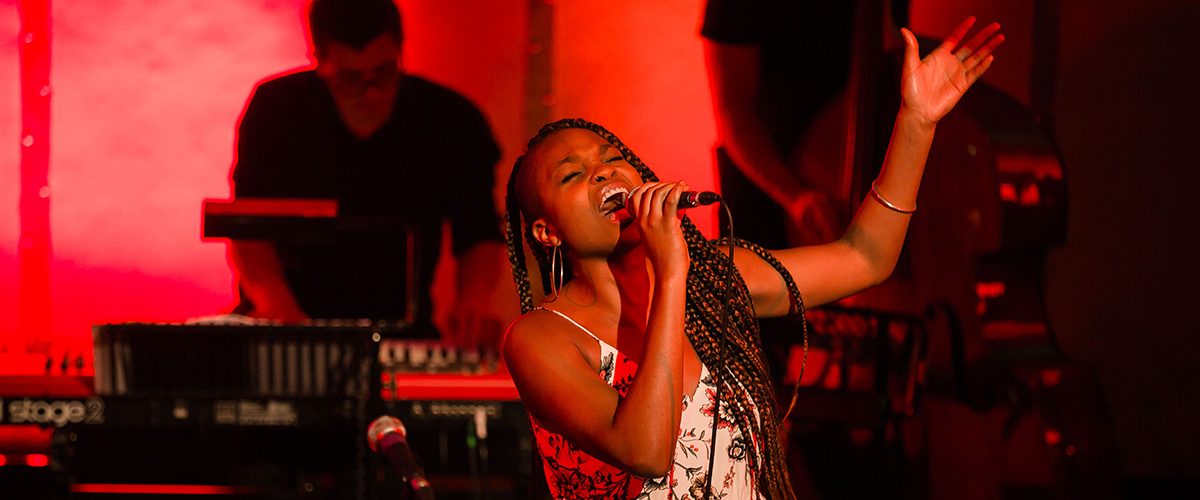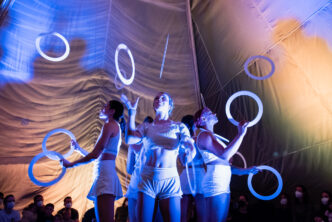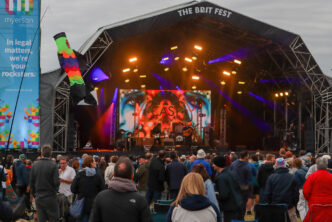It must’ve been quite something to see Nina Simone live at the NIA Centre, Hulme on 2 May 1991.
By then, at the age of 59, Nina Simone was an established artist whose music had recently become popular with a whole new generation of fans after My Baby Just Cares For Me was used on an advert and then re-released, becoming a top 10 hit.
Here she was playing to a small crowd of no more than 700 people in a new, intimate venue, on the outskirts of Manchester City Centre. Today, it is hard to imagine a big American star doing this, which makes it all the more interesting to find out the story behind how it came about.
The building itself wasn’t new – it opened as a theatre in 1902 and had gone through various uses since, including a cinema and a music studio for the BBC. The Nia Centre saw it take on new life as a live venue focused on Black culture – the first of its kind in the UK. Its new purpose fitted well with Simone’s civil rights activism and fight for racial equality. The singer also made Europe her home in the final years of her life, and in the previous decade had been a regular at Ronnie Scott’s Jazz Club in London.
It was evident many in the audience at Home had the fortune to be there when the jazz icon arrived for the Centre’s opening concert on Chichester Road. For them, no doubt Nina at NIA was a nostalgic experience. And I’m sure there were some fantastic tales regaled in the bar afterwards. For someone, like myself, who wasn’t there, these are the stories I would have liked to hear.
In Nina at NIA we get a mix of opinion, biography, anecdote and song. Singer, Yemi Bolitawa does a fine job in recreating the emotion of Simone’s powerful vocals, while still making the songs her own rather than impersonation. Supported on stage by the 8-piece, Untold Orchestra, Bolitawa brings some sense of what it would have been like to have been there. Home’s Theatre 1 is a similar sized space to the 1990’s venue, NIA. Songs include: My Baby Just Cares for Me; Four Women; Feeling Good; Sinnerman; Don’t Let Me Be Misunderstood; Young Gifted and Black, and I Wish I Knew How it Would Feel to be Free. The evening ran over its 75-minute schedule by 15 minutes. Given the enthusiastic response to the music, I’d like to have seen the company add another couple of songs and make it a two-hour show with an interval. Certainly by the end everyone was ready for hearing more Simone hits.
All FM radio presenter, Audrey Hall, who did the press and publicity for the original concert, hosts the evening. She narrates Simone’s history, which is read out at a podium, like a lifetime achievement award speech.
The evening focuses on Simone as an artist and activist, rather than her time in Hulme. Recollections from that night can sometimes feel like in-jokes – call outs to people who were there and knowing smiles. But for those of us who weren’t, we want more eye-witness detail. There are a few minutes of crackling audio of Simone singing, but there are no photos or videos from the evening. For Simone fans and local history enthusiasts, it feels there are still a wealth of gems to mine about this little recorded part of Hulme’s past. For such recent history it deserves to be recaptured before it fades into myth.
Nina at NIA has made a fantastic start in sparking that interest. There is an important sense that the NIA centre was part of a much wider, global movement for racial equality. One that Simone, and Black musicians worldwide, played a significant role in, and one that has come a long way but is sadly not over. The NIAMOS centre, on the site of the old venue now takes up the baton for Hulme. It is a co-operative celebrating diversity and connecting people around values of human connection, wellbeing, art, and culture. It is an uplifting message and, like Simone’s music, one we long to keep hearing.
★ ★ ★Nina at the NIA was at Home, Manchester on 25 January 2020 as part of the PUSH Festival.





